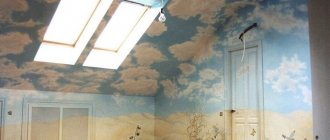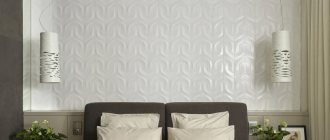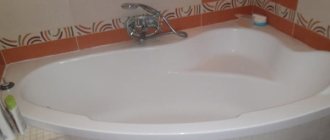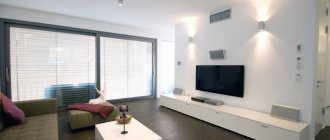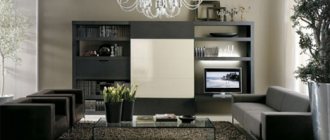Classification
Decorative lighting using various schemes has replaced the only round or square lampshade traditionally installed on the ceiling. And if previously the main light source was enough, now modern interior design offers many options that expand the idea of how best to arrange your bathroom.
Lamps can be placed on the wall, ceiling, floor, or connected to different switches. Thanks to this, it becomes possible to control the lighting in the bathroom.
Main requirements for bathroom fixtures
The bathroom is a place where pretentious design and fragile materials are of no use. Constant exposure to moisture also imposes certain requirements on lighting fixtures. Carefully read the requirements for spotlights for the bathroom.
Thermal rings for tension structures will protect the fabric from rupture and overheating by artificial light sources
Important properties of suitable bathroom fixtures:
- Models with fasteners to the base ceiling are much more reliable than any other. To ensure that the lamps sit firmly in their places, use just such fastening systems.
- It is advisable to abandon incandescent lamps for spotlights. Heating the lamp can permanently damage the suspended ceiling.
- The base of the lamp must be without corners and notches.
- A chandelier or lampshade for a spot must be absolutely sealed so that water does not enter the electrical network.
- The thermal ring will help protect the PVC film from the heat of the operating device. Always use quality thermal rings.
When choosing lamps, be sure to follow the rules for lamps in the bathroom. After this, choosing lighting fixtures will be very easy.
Types of lamps
The modern market offers various types of lamps and devices:
Raster. Aluminum grilles mounted on the ceiling, included in the design of this lamp model, reflect the light and make it three-dimensional.
LED. Minimal power consumption and independence from voltage surges are their huge advantages. Cons: high cost.
Built-in. Installed during ceiling installation.
Spotlights. They serve more decorative functions. Reliable, practical. Allows targeted illumination of a specific area. Easily serve as main lighting.
Invoices. They are installed after all construction work in special holes in the ceiling or wall.
Luminescent. Also called energy saving. Gives uniform bright light.
Durolites. Flexible mounting strips with LED bulbs and resistors. They are usually installed around the perimeter. They often function as garlands.
Placement of lamps
Based on the nature of their placement, luminaires are divided into the following categories:
- To illuminate the mirror;
- Ceiling;
- Floor-standing;
- Wall-mounted.
Lamps for slatted and suspended ceilings
When decorating a bathroom, it is important to choose the right lighting and create good visibility. At the same time, it is important that the intensity of illumination can be adjusted. To take a bath with aromatic oils, you are unlikely to need bright light, but dim light is just right.
To decorate slatted and suspended ceilings in the bathroom, spotlights, surface-mounted and recessed lamps with LED lamps are used.
This kind of illumination has its significant advantages:
- Energy saving of the highest level.
- Long service life;
- Lamps are economical;
- Availability of high-quality transformers that protect the entire device from power outages.
- The ability to create panoramic lighting in a tiny bathroom.
A huge disadvantage of such LED lamps and the equipment necessary for their installation (transformers, ventilation system) is their high cost.
- Slatted ceiling in the bathroom: installation features, installation rules and optimal combinations of materials (125 photos)
Plastic ceiling in the bathroom: 110 photos of choosing optimal designs, panels and lighting
- Plasterboard ceiling in the bathroom: preparation of surfaces and installation of structures. 115 photos and installation instructions
How to calculate lighting in the bathroom
You should start by calculating the lighting. According to SNiP, at least 50 lumens should fall per 1 square meter. It is in this value that the required amount of light is determined, and not in watts.
Here we come to the conclusion that for a bathroom of 5 square meters, you will need 250 lumens.
Note that the norm defines the lower limit below which it is impossible to fall. A comfortable amount of light may be greater than this value.
If more light is needed, no one prohibits it and the law does not regulate any sanctions for non-compliance with the requirement.






